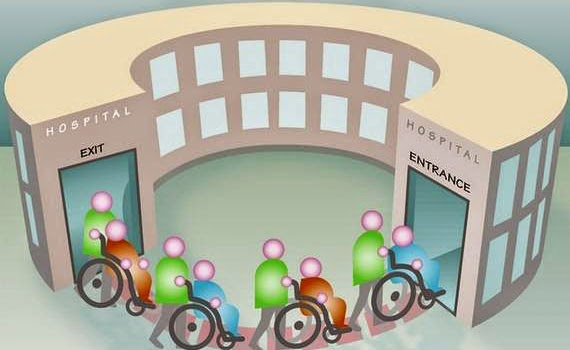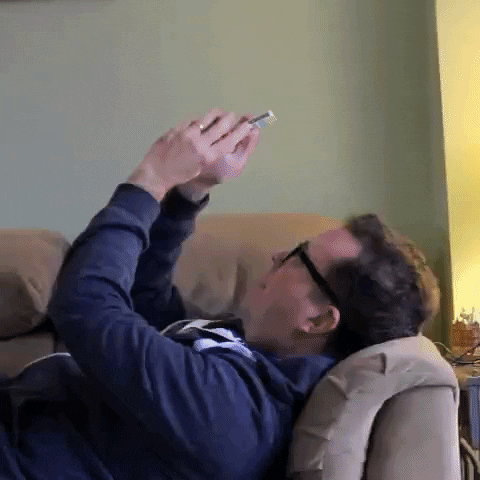SeamlessMD’s Mission: Right Care, Right Patient, Right Time
“We’ve designed the healthcare system to make it easy for healthier patients to get care. But we make it hard for our sickest, most complex patients – who need care the most – to get the care they need.”
This was a stunning realization for me. 🤯
When I heard this quote, I was in my second year of medical school, and I was helping an academic hospital uncover barriers to their physicians doing house calls for the homebound elderly.
For clinicians being trained today, house calls must sound like something from another world. In the 1930’s physician house calls represented 40% of patient encounters, but by the 1980’s, it declined to below 1%.

But physician house calls are crucial for a specific part of our population. The homebound elderly are unable to seek primary care in the clinic due to physical, cognitive or psychosocial barriers. One third lack a family physician.
Why aren’t physicians doing house calls anymore?
When I surveyed physicians, the top three barriers to doing house calls were:
- Time: You can see far more patients in an office setting, since you wouldn’t need to travel to and from patient homes
- Reimbursement: Although house calls may be slightly better reimbursed per visit, your compensation in the office setting is greater due to much higher volume. Plus, it’s more convenient (no travel).
- Safety: There is both a perceived and real physical risk of delivering care in an unfamiliar physical environment.
In a primarily fee for service environment, it’s unsurprising that over the past century, medicine gravitated towards the office based environment. But this focus on clinic-based care, combined with a growing population, has resulted in major healthcare problems – not only for patients who face barriers to comprehensive medical care, but also for the sustainability of our healthcare system at large.
The homebound elderly are more likely to be severely disabled, with multiple chronic conditions – and their complex chronic conditions are often poorly managed. When problems arise, it’s rarely caught early. When these patients get ill, they must rely on an ambulance trip to the ER – resulting in many preventable ER visits and readmissions, and much higher healthcare costs.

How big is the need?
As an example, in the U.S., there are more than 2 million homebound elderly – with the need growing during the COVID-19 pandemic.
Researchers at Mount Sinai found that the proportion of elderly who were homebound more than doubled 5% → 13% in 2020. It’s unclear if this increase has been sustained since, however some level of increase has likely remained since the elderly are at higher risk of severe illness from COVID-19, and thus remain at home.

I remember when my principal investigator (PI), a family physician, took me on a few house calls. It gave me perspective on the barriers I heard from physicians. At the same time, it underscored the importance of what my PI was trying to build with her house calls program: these patients needed more accessible, proactive care in the community.
Getting back to the story
Which brings me back to the quote at the top of this story.
I had been presenting my findings to my hospital’s innovation center that focused on caring for complex patients. An internal medicine physician raised what I quoted above, about the crazy reality that our healthier patients have no problem walking into our office-based practices, but our sicker, homebound elderly patients – who need care the most – can’t stroll into the office, and thus are the least likely to get medical care.
It was such an obvious observation in retrospect, but something we often fail to think about as a healthcare system.

So what’s the solution?
I didn’t believe then or now that just increasing the number of in-person house calls is the only solution (although it’s part of it). The world has changed in many ways over the past decades, and our approach to care delivery needs to keep in step. And while telemedicine has certainly bridged some of the gap, it’s only one part of the solution.
What was clear is that there’s so much more we could do for not only this population, but all patients, if we could bring care into the home – especially between visits.
That belief and that work was what kick-started my trip down the rabbit hole into hospital readmissions, and quality and patient safety as a whole – which ultimately led to starting SeamlessMD.
SeamlessMD’s mission is “to ensure every patient gets the right care at the right time.”
Most care is delivered within the four walls of a hospital or clinic. But 95% of the patient journey happens at home in the community, when patients are not in front of their care team.
Getting every patients the right care at the right time means helping healthcare providers extend their reach to patients in the community – but in a way that is scalable for clinicians (we can’t expect providers to monitor every patient every second of the day). It also means empowering patients to be partners in their care, making it easier for patients to stay on track with their care plans and empowered to track their own health status.
At SeamlessMD, we believe Digital Health is a huge enabler in making this possible – it’s why we do what we do.
At the same time, we aren’t naive to believe Digital Health solves this completely (there are certainly some patients, including homebound elderly, who are not digital savvy!). We still need non-digital avenues to reach a subset of patients, or for when higher levels of care are required. We also need further evolution of our reimbursement model to incentivize better health outcomes, and therefore, more care at home. Our system must be re-designed to make it easier for healthcare teams to deliver the best care possible.
That said, time and time again, I’ve found our healthcare partners pleasantly surprised to see that patient adoption and engagement with Digital Health, especially among the elderly, is far higher than what they were expecting. Ultimately, I do believe digital access and savviness will only rise over time – so we are building for the future as much as we are for the present.

When I first studied house calls ten years ago, solutions like SeamlessMD didn’t exist – so our healthcare system has come a long way since then. While I believe we’re still in early innings of the Digital Health transformation, and it’s still very much an uphill battle, the changes in our growing population show that our mission is more important and relevant than ever.
So let’s keep building! 🚀🚀🚀

